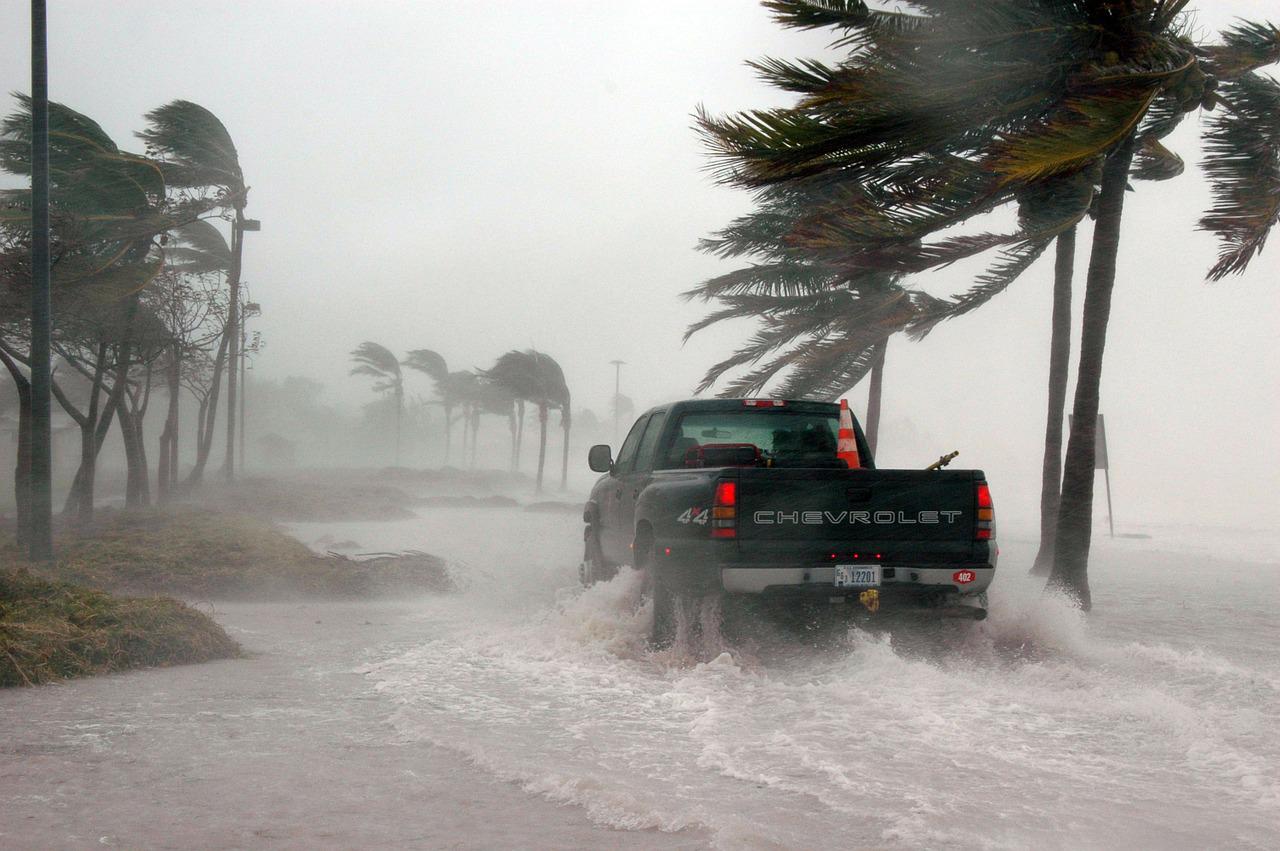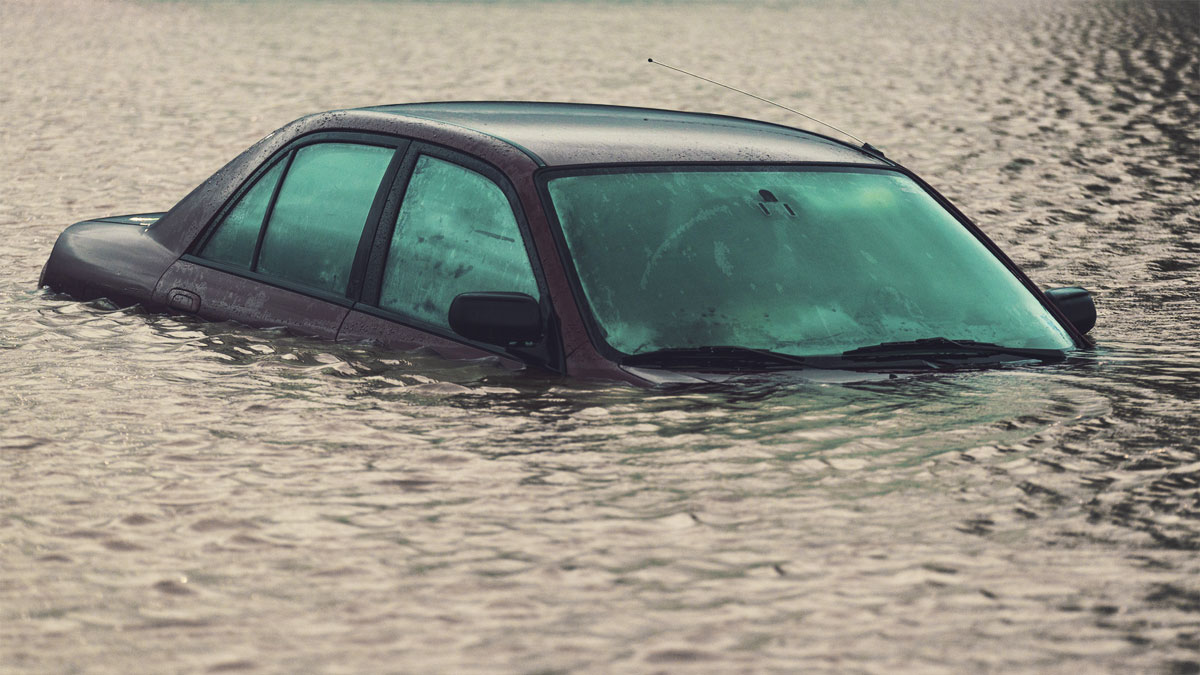A flood-damaged car may be a total loss.
Today marks the official start of hurricane season, six months when such storms are most likely to occur. The season also serves as a warning to millions of Americans to remain alert and get prepared.
But it doesn’t take hurricane season to damage property, including your car. Tornadoes, downpours, floods, and other extreme weather events happen throughout the year. Indeed, it doesn’t take much for floodwaters to rise and submerge your vehicle, rendering it unfit for use.
Be On The Look Out For Storm-Ravaged Vehicles
In the aftermath of hurricanes Katrina and Rita, tens of thousands of cars were scrapped, as they were deemed damaged beyond repair by flood waters, wind, or other storm-related insults.
Some reports put that number at 250,000 vehicles, which represented cars registered to owners in Florida, Alabama, Mississippi, Louisiana, Texas, and the adjoining states.
Flood-Damaged Cars Retitled
Though most of these vehicles were hauled away and the titles changed to reflect that they had been totaled, in some cases these same cars were bought, retitled in other states, and offered for sale.
Unsuspecting buyers who were thinking that they were getting a quality used car, eventually learned that they were storm-ravaged, thanks to rusting body panels, foul odors, malfunctioning components, and a host of other ills that only surfaced after they made their purchase.
It has been several years since America was ravaged by some of these storms, but the warning about flood-damaged cars remains in place.
Historic flooding in the Upper Midwest in 2008, in the South in 2010 and along the east coast in 2017 and later has yielded a bumper crop of damaged vehicles. The same post-Katrina scenario is once again rearing its ugly head: cars that were once totaled by insurers are back on the market and available for purchase.
See Also – What Is a Blue Title In Texas?
Flood-Damaged Car Inspection

The extent of that damage isn’t always known until you perform a hands-on inspection. Here’s what you need to do (and not do) as you inspect your flood-damaged car.
1. Take caution before you begin your inspection.
Is your car still sitting in the floodwater? Be extra careful here — debris, including metal, glass, sewage, or chemicals, may be present. Unless you have the proper gear, including wading boots, it would be better to wait for the water to recede.
2. Do not start the car.
Submerged vehicles likely have water in the engine, so don’t start the car. At least not immediately. Contact a tow operator to have your vehicle pulled to higher ground. Key fluids, including engine oil, transmission fluid, coolant/antifreeze, and brake fluid may need replacement before moving your vehicle.
3. Inspect under the hood.
Some of the worst damage done to a submerged vehicle is under the hood. Water and debris will find its way into every nook and crevice, including inside the engine, the transmission, or other key components.
Check your motor oil as you always do, by removing the dipstick. If you discover water droplets, then the engine cylinders sustained damage.
4. Examine the fuel tank.
You can’t see inside the fuel tank, but you can determine whether water invaded the interior by siphoning fuel into an empty gas can and looking for water, which doesn’t mix with fuel, by the way.
If water is present, remove all fuel, dispose of it properly, then refill.
5. Replace the motor oil and transmission fluid.
Then attempt to start your car. If it starts, drive it for several hundred miles, then change the engine oil and transmission fluid again.
6. Check the electrical components.
If your car doesn’t start, there may be damage to the electrical components. Corroded battery cables, burned-out fuses, a malfunctioning alternator or voltage regulator, and a broken serpentine belt are some things to look for.
In addition to wiring, all belts and hoses may need replacement. Sensors and your car’s central processing unit (CPU) may have also sustained damage.
7. Attend to the interior.
Unfortunately, flood damage most likely isn’t limited to under the hood or to the gas tank. The interior may have filled with water, potentially ruining your audio system, soiling the carpeting, wrecking your upholstery, and infiltrating other areas.
Remove carpeting, seats, and cushions, then use a garage vacuum to sop up the water. Fans and dehumidifiers can hasten the drying process.
8. Don’t overlook the trunk or rear storage compartment.
Your trunk or other storage compartments may have also sustained water damage. Check the wheel well and underfloor storage compartments, remove carpeting, replace netting, and inspect and oil all hinges.
When Should I Notify My Insurer?
Depending on how much damage your car sustained, filing a claim with your auto insurer may be the most sensible approach. If you have comprehensive coverage, your claim may cover the cost of replacing your vehicle, minus a deductible.
You should know that this information is a matter of public record, and it can appear on your vehicle’s history report.
If the insurance company determines the cost to fix the damage to your car (minus your deductible) is more than what the vehicle is worth (and what it can fetch by selling it to the salvage yard), they’ll consider it a total loss and you’ll receive a check. The insurer then must report the totaled vehicle to the appropriate state department.
In some states, you’re allowed to buy back your totaled car, but it will also carry a “flood” or “salvage” title, indicating that it sustained major damage.
If It Sounds Too Good To Be True…
With any used car purchase the maxim, “if it sounds too good to be true, then it probably isn’t,” is the best approach when buying any vehicle.
Certainly, you want to get the best price for a used car, but not at the expense of your wallet or your safety. Flood-damaged cars have a short lifespan and could put you and your family in harm’s way if an important part suddenly fails.
- 2024 Mazda CX-50: A Compact SUV with Premium Aspirations - Apr 15, 2024
- 2024 Ford Mustang (Iconic Pony Car Evolves) - Apr 4, 2024
- 2024 Ford Maverick (Looks Like a Truck, Drives Like a Car) - Mar 28, 2024

